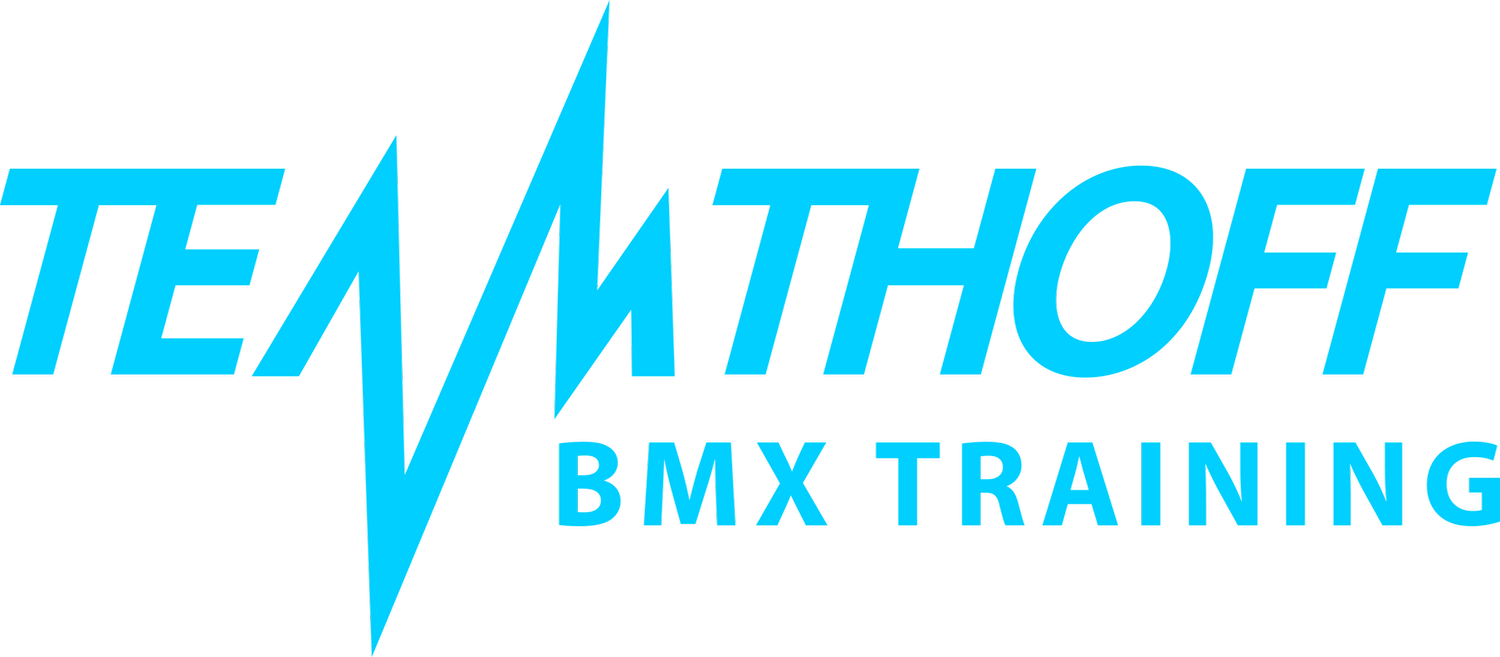For most of us when we think about gym programs for BMX we think, "lift a ton of weight and you'll go faster." However, as nice as lifting a ton of weight is, it doesn't always mean that you'll go faster, especially in the long run. A simple google search will reward you with many articles published by great coaches in several power and speed sports that speak about the negative effects a heavy squat can have on performance.
BMX is an interesting sport because we typically need to have a solid foundation in strength, power, speed & speed endurance. If you work on one area to much you will lack in another but the biggest issue is getting a well rounded blend of all aspects at any one time. Lets face it, getting to the first turn is 90% of a BMX race and winning to the first turn is all about strength, power and speed. This very fact is why I believe most BMXers suffer from lifting the wrong weight to often and not properly cycling their lifting properties which in turn gives them the right results in the gym at the wrong time on the track. Have you ever showed up to a race with the best squat or deadlift you've ever had, stepped on the pedals and felt like a monster but for some reason you couldn't quite accelerate like the competition? You just might have fallen into the category above but don't worry it's common and there is a fix.
Velocity Based Training "VBT" is a system of measurement for your gym routine. This velocity measurement is tracking how fast you move the bar during your lift. Every lifting characteristic I.E. strength, power and speed require specific bar speeds. Velocity ranges have been developed by several great coaches over the past 5-10 years and have helped pave the way for coaches like myself to adopt VBT with their athletes. I've been fortunate to have Carl Valle take me under his wing and challenge my thinking and open the world of VBT for my programs. Carl is very well known around the sports science arena and I owe most of what I have learned to him. These prescribed velocity ranges help ensure that the athlete is properly training the needed characteristic so they achieve the proper results in the gym and on the track. That's not all though, VBT devices also help us keep track of power outputs, which can give us an even broader range of information for an athlete that is critical for in-season training and avoiding burnout.
For the past several years i've been collecting data and refining my approach to my athletes BMX training gym programs. Each year the data reveals something new and each new year we implement a new strategy to try and fill gaps we find. Over time I have developed a successful blend in working strength power and speed, all in calculated time frames. Below is a snap shot of an Australian TeamTHoff athlete. You'll notice the different velocity ranges in the bar graph. This session was specific for working several different aspects of Daniels needs on the BMX track. By implementing VBT into Daniels training program we are able to fine tune his gym program and make sure he's working the right aspects at the right time.
The goals for a BMXer in the gym are very similar to their goals for sprints and on the BMX track. That is, stronger, more powerful and faster. Before VBT and still more common today, coaches have used percentages of max to prescribe power-speed work. Or even worse, the coach who puts the same weight on your back as a strength squat and tells you to lift it as fast as you can and calls that "speed/power work." The problem with percentage based programs is they assume that all athletes are the same. It doesn't take into account that some athletes are more/less explosive than others and the percentage might work for some but is fatal to another athlete who can't quite pick up the bar speed necessary for the prescribed characteristic. The result of an athlete lifting a weight built on percentage compared to a personalized prescription based on VBT is simple.. The weight is either to high and it makes them slower on the bike over time or the weight is not heavy enough to create the proper stimulus to increase power over time and the athlete doesn't gain as much as they could. Keep in mind that percentages can absolutely be the correct prescription but you wouldn't know without lifting with some form of objective feedback.
pictured below is a graph that maps out some of Brooke Crains back squat power output last season at her speed weight, which was 95lbs. It also shows a map of her power output at 135lbs, which at the time was in her strength zone. I have removed the fat from the graph which would be this entire seasons lifting to show just how much she's progressed and how using VBT we have gradually switched 135lbs from being her strength weight to her speed weight. You can see in this graph that Brooke is putting out nearly the same amount of power with 135lbs on her back as she did a year ago with 95lbs.
I can honestly say that the Elite level of racing BMX the competition has never been so tough. We seem to be reaching a day in age when smallish guys are no longer finding ways into the main events and skills alone will not cut it (no racing from behind). It's a blend of the top gene pool, skill set and mental toughness. This level of toughness seems only to be getting more fierce by the year and athletes need every 1% percent they can get. It won't be long before we see a wide spread adoption of VBT at the amateur ranks and i've begun the grooming process with World Champions like Bubba Gonzales & Ryan Martin already so they are ahead of the game in the years to come. The effects of implementing VBT into your program could give you a huge upper-hand when done correctly, especially when you are talking about your performance over a season, after all, anyone can show up to 1 or 2 races and be fast, it's the ones who show up 95% of the time on their mark that stand out.



